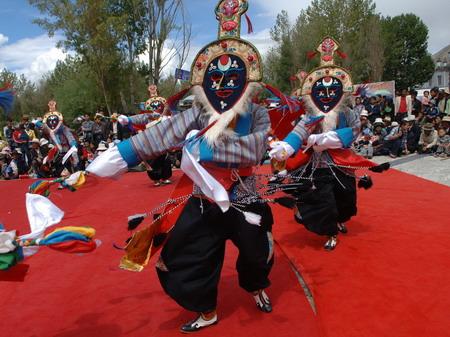
Tibetan opera is one of the most ancient operas in China.
Tibetan Opera is an ancient art form that has developed over the centuries. The Tibetan people have long cherished this important aspect of their folk culture and it has become part of who they are. Indeed, wherever you find Tibetan people, you find Tibetan opera.
Almost all of China's 55 ethnic minorities have their own operas. The one you're now listening to heralds from the highest plateau in the world - Tibet. The simple but passionate rhythm contains both songs of joy and songs of sorrow.
Throughout the ages Tibetan opera has played a central role in the life of the Tibetan people. Every August and September, hundreds of thousands of Tibetan people put on their best clothes, and come together to watch Tibetan Opera in the bright sunshine.
Tibetan opera is one of the most ancient operas in China. There is a beautiful legend about its beginnings. In the 14th century, there was a ruler named Tangdongjiebu. To help his people, he planned to build an iron bridge over every river in Tibet. However, he needed a lot of money so he traveled around Tibet and trying to raise the necessary funds. However, after three years of wandering he still couldn't finance his bridges.
However, his efforts caught the attention of a goddess in Heaven. In one of his dreams, the goddess guided him towards seven beautiful sisters who danced very well. Tangdongjiebu organized them into a dancing troupe to hold performances in different places to earn money for his bridges. This is believed to be the birth of Tibetan Opera. Tibetan opera became known in the local language as Ajilamu, meaning fairy sisters. Tangdongjiebu himself is considered as the father of Tibetan opera.
